Manila is the gateway into the country. A great place to capture her famous city-views, buildings, ruins, historical places, aerial views thru the lenses of a professional photographer and mass producing them for tourist market thru postcards.
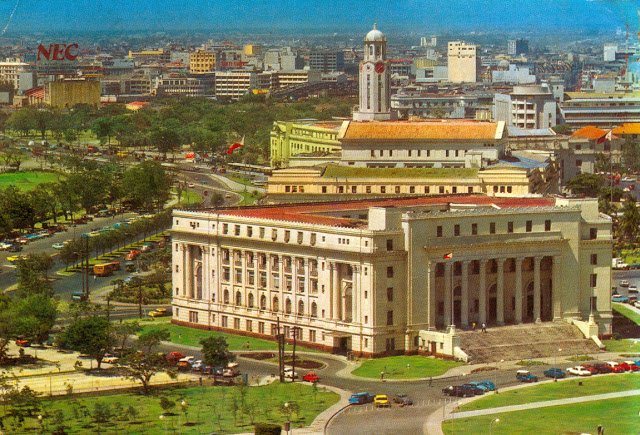
Department of Finance, Legislative Building, Manila Cityhall, GSIS building, Manila Metropolitan Theater, Quezon bridge and Luneta park are some of the important buildings captured in this aerial shot – JMC press ( Goodwill Bookstore circa 1967)
The parents of Ms. Maria Teresa Cancio-Suplico, Mr. Manuel and Juana Cancio who founded 3 bookstores at the foot of the Escolta Bridge, Manila. These 3 were named Educational, Goodwill and National.

Chinese garden arch- Luneta park – This postcard was printed by Kruger company and distributed by National Bookstore

Aerial shot of Manila pier, buildings, aduana, intramuros are clearly seen in this postcard. This postcard was printed by Kruger company and distributed by National Bookstore.
Vintage 1960’s Manila Postcards
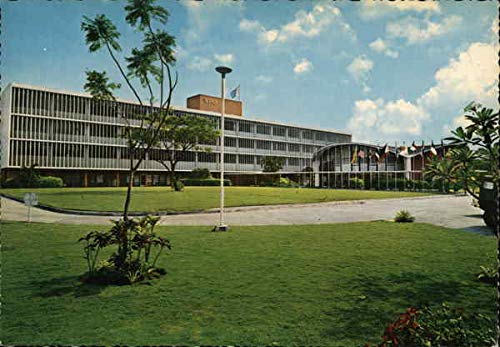
World Health Organization building located along United Nations Avenue formerly called Isaac Peral is the headquarter of WHO Asia-Pacific
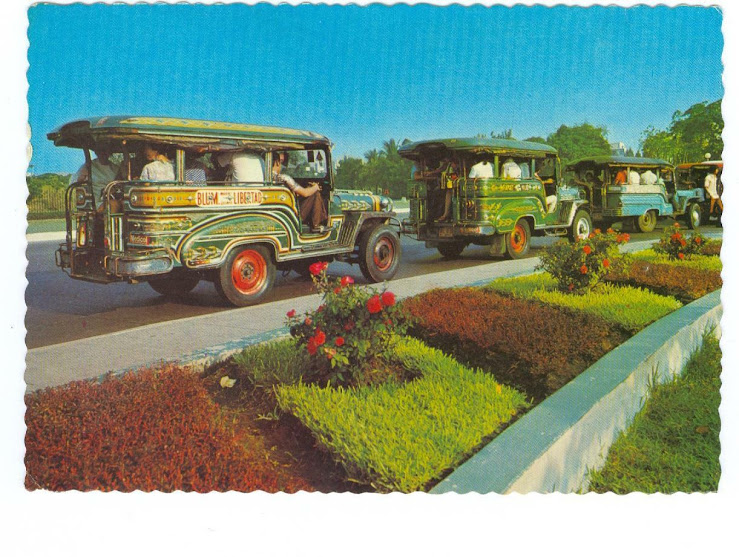
colorful jeepneys which ply the route of Blumentritt- Libertad, Pasay and vice versa within Luneta Park, Manila

Lagoon at the Rizal Park with Daily Star, Volkswagen and Manila Hilton along T.M. Kalaw street was printed by Kruger and distributed by National Bookstore.
There is also a similar postcard print but with Japanese characters at the back portion, probably intended for the Japanese tourist market.

Fort Santiago and Dr. Jose Rizal cell ruins printed by Kruger and distributed by National Bookstore
Goodwill Bookstore also printed several thematic postcards which were distributed in many smaller bookstores in the provinces.
They also have several lenticular or 3-D postcards which were quite popular in the tourist market. These were categorized into Philippine dances, flowers, religious and well-known landmarks.
According to some serious postcard collectors, They have estimated that JMC and Goodwill Bookstore might have issued between 150 to 200 thematic postcards from the 1960’s until mid- 1980’s.

Agriculture and Finance Building (Agrifina) neo-classical architecture, water fountain, Manila Cathedral and MD bus transit had a route from Quiapo to Bangkal in Makati. – JMC 1967 ( Goodwill Bookstore)
According to a September 12, 2017 Facebook post of Ms. Maria Teresa Cancio-Suplico
Goodwill through its printing arm JMC Press, produced beautiful postcards that were photographed by 2 Japanese experts in photography who stayed for at least a month in the Philippines to go around the country on a mission to photograph our best Philippine tourist spots like Mayon Volcano, Pasonanca Park in Zamboanga, & many others.
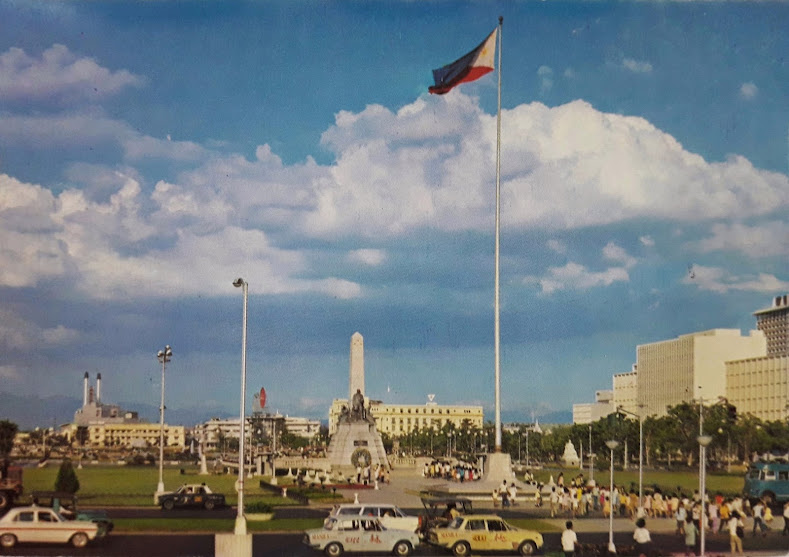
Dr. Jose Rizal monument and Luneta Park- printed by JMC 1967 ( Goodwill Bookstore)
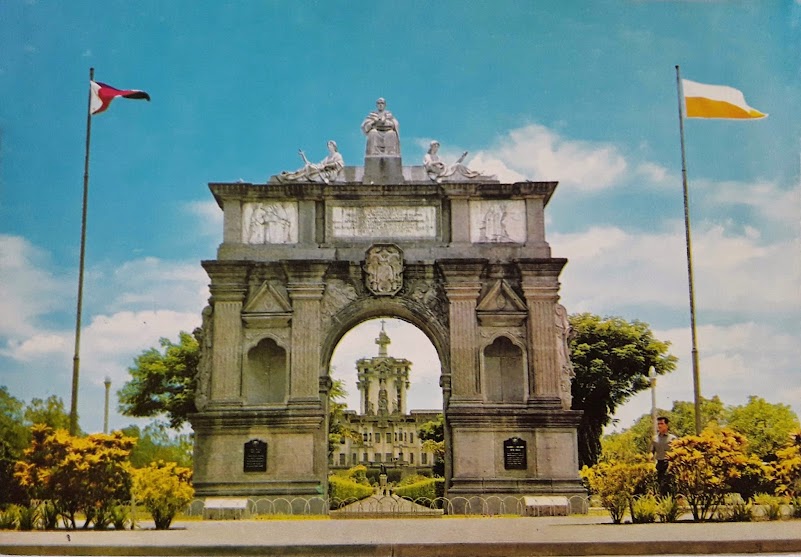
Arch of the Centuries- University of Santo Tomas -printed by JMC 1967 ( Goodwill Bookstore)
Some of these postcards were pasted onto greeting cards that were die-cut to fit the postcard & the resulting frame around the postcard was embossed in gold. These greeting cards were works of art in their own way.
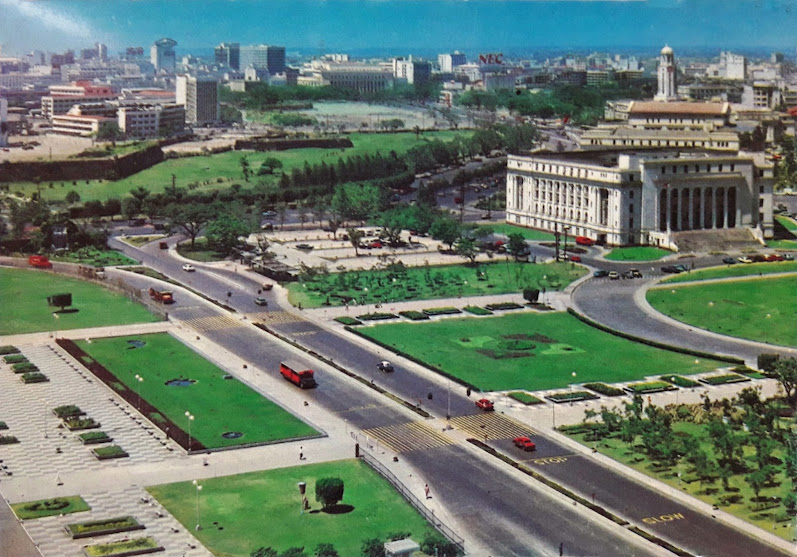
Aerial view of Luneta and other government buildings -printed by JMC 1967 ( Goodwill Bookstore)
This postcard showed the other parts of Manila which included portion of Intramuros, post office,newly planted trees and main boulevards.
Manila is much cleaner with less visible pollution 50 or 60 years ago compared today. Some of the heritage buildings are no longer there, But only postcards, photos and collective memories are highly cherished.
Happy 449th anniversary founding of Manila !
Note: postcards were collected by the author. Postcard copyright from JMC Press/ Goodwill and Kruger/ National Bookstore
Bibliography, Sources and References:
Personal interviews with postcard collectors from the Philippines ( Mr. Rogelio de Jesus, Mrs. Melissa Perez, Mr. Iggy Tuazon, Mr. Dionne Taeza, Mr. Federico Ligon)
Goodwill Bookstore proprietor : Ms. Maria Teresa Cancio-Suplico
Collins English Dictionary : Postal Card
Personal interview from postcard collectors
Philippine Postcards page 130 to 137 Consuming Passions
Philippine Postcards.com: https://www.philippinepostcards.com/
Puente Colgante. ( 2005). In Virgilio Almario ( Ed.), Sagisag Kultura ( Vol 1). Manila: National Commission for Culture and the Arts.
Filed under: Place, postcards, vintage | Tagged: 1960's, Educational, Fort Santiago, Intramuros, Jeepneys, Lagoon, Luneta Park, Manila, Manila Cityhall, Ms. Maria Teresa Cancio -Suplico, vintage | Leave a comment »




